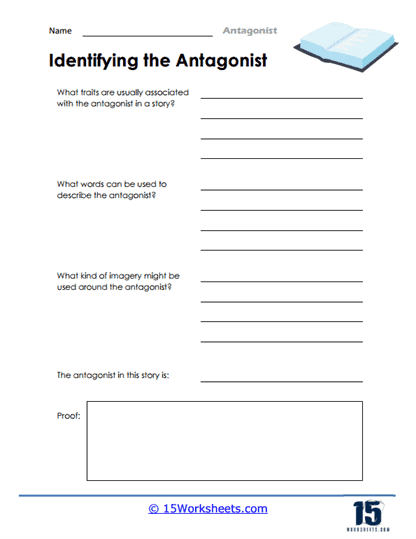Imagery And Describing Words

Worksheet Description
This worksheet is designed to guide students through the analytical process of identifying and understanding the antagonist in a story. It prompts critical thinking by asking students to consider the common traits associated with an antagonist, such as ambition, envy, or a thirst for power, which typically stand in direct opposition to the protagonist’s qualities. Students are encouraged to think deeply about the words that can describe the antagonist, not just in terms of their negative aspects but also in terms of their complexity and humanity. This exercise is not only about labeling but also about comprehending the character’s depth, motivations, and influence on the story’s direction.
The next section of the worksheet focuses on the use of imagery surrounding the antagonist, allowing students to explore how descriptive language can evoke a certain atmosphere or emotion linked to the character. This part enhances the student’s ability to notice and articulate how the author’s choice of imagery contributes to the development of the antagonist, creating a more immersive and compelling narrative. Finally, students must apply their analysis by identifying the antagonist in the story they are reading and providing evidence for their choice, reinforcing their understanding through concrete examples. This worksheet is a comprehensive tool for building analytical skills in literature studies.
